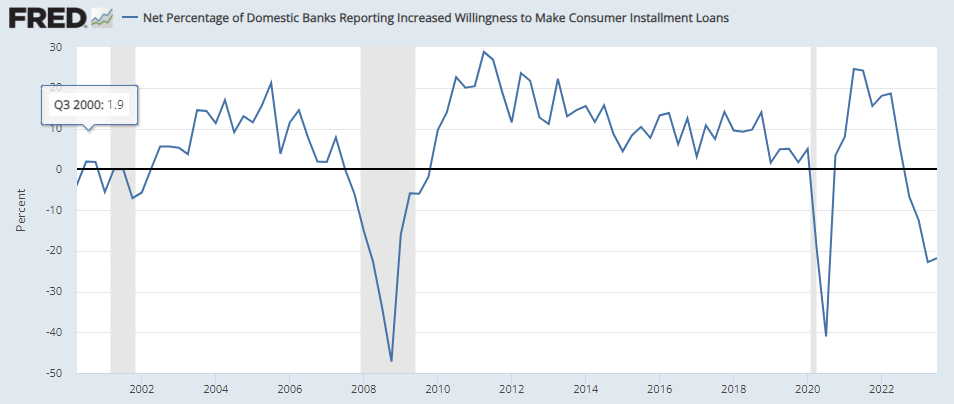The market would have you believe everything is fine with the banking sector. JP Morgan (JPM), the largest bank in America is up 14% this year, double the gains on the Dow Jones Industrial Average.
But behind the scenes, cracks are forming that threaten the entire industry and more.
It started in March when Silicon Valley Bank collapsed. This sparked bank runs that crushed smaller rivals' shares by 30% in a matter of days. The contagion seemed contained until last week. That's when Moody's quietly downgraded 10 banks and put 6 more on notice - a major blow to the industry.
Why the sour outlook?
The agency cited nervous customers pulling deposits, as well as risks from higher interest rates and dodgy commercial real estate (CRE) loans. Banks are overexposed to dangerous CRE loans, many of which are headed for imminent default.
Now this many not sounds like a big deal. But the fact of a matter is it is.
Almost 40% of a typical bank's loans are tied up in commercial real estate. And with a near-record number of mortgages expiring into decade-high rates, defaults loom. This is vital as banks provide the lifeblood of the economy: credit. And bank troubles don't stay confined to Wall Street. Tighter lending ripples over Main Street as well.
Contagion is happening right now and here is what happens next…
Financial Crisis Redux?
As I was just saying, it may not seem like the end of the world if the office building down the street is closing. But to the reality is it’s part of a series of dominos falling that could impact everyone in America.
U.S. banks are now reporting tighter credit according to a recent Federal Reserve survey. And that means consumers are having a harder time securing a loan.
In fact, outside of the pandemic, the net percentage of banks reporting greater willingness to make consumer installment loans was -21.8% according to data collected by the St. Louis Fed.

That’s a level -outside of the pandemic - we’ve not seen since the banking crisis of 2008 to2009.
Banks Will Be Banks
When the Fed started raising interest rates to fight inflation in 2022, the conventional wisdom was that banks could make more money on the spread between rates they charge on loans versus deposits.
Instead, the opposite played out. The Fed’s intense hiking cycle combined with the failure of three midsized banks prompted customers to pull their money out of checking.
In the first quarter, community banks paid an average of 1.14% on deposits. Why would a consumer want that, when they could get 4%+ in a money market fund with their brokerage?
Banks are under pressure and struggling with inflation. And inflation, though slowing, isn’t yet making a significant difference to the average American. But fractures are starting to appear.
Americans are racking up credit card debt to an all-time high of $1.03 trillion. Debt servicing costs are at their highest level in 30 years at 20.6%, making it difficult for people to afford their payments. And the resumption of student loan payments is a looming threat to the main engines of the economy.

These trends aren’t going to change course any time soon.
Currently, markets have priced essentially no interest rate cuts through March 2024. And they’ve only priced cuts for 100 bps next year. With a small cut like that, we won’t see deposits flowing back into small- and mid-sized banks.
How to Play High Interest Rates
So, what’s the takeaway?
It means that not only could we be headed for a bigger banking crisis, but we could see contagion where it starts to impact a growing number of market sectors...
Retail…
Manufacturing…
Finance…
What I like to do in times like these are trade momentum with the market. And right now, energy is the trade I’ve been watching for the last several weeks.
The Energy Select Sector SPDR Fund (XLE) has outperformed the broader market, and it looks to continue running as oil prices climb higher. The International Energy Agency is forecasting global record demand. And at the same time, OPEC+ is creating a deficit in the market with Saudi Arabia cutting one million barrels per day of crude oil production.
Add into the mix, China is cutting rates as its economy slumps. This is an attempt to stimulate growth. And as the second-largest oil consumer in the word, more growth from China would help fuel the XLE trade.
My colleague Shah Gilani also sees several titanic opportunities here and is ready to act quickly.
To help you get in on the ground floor, he’s created an urgent video with all the details.
Then dig deep and make the trade.
Until next time,

Alex Kagin


